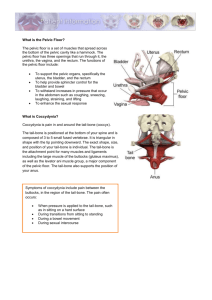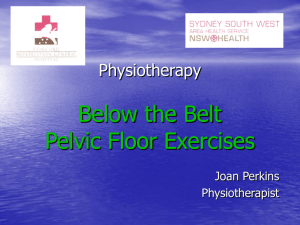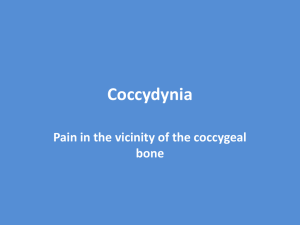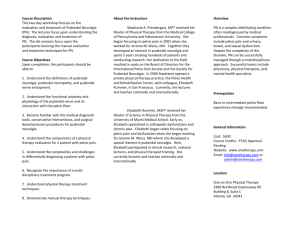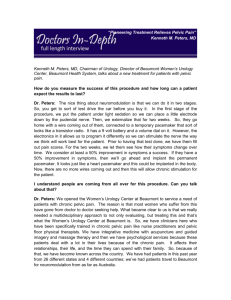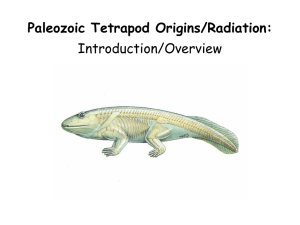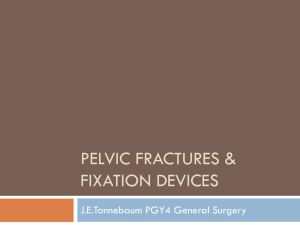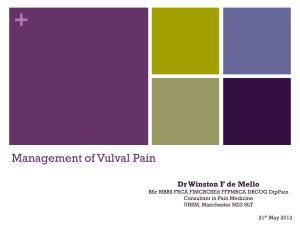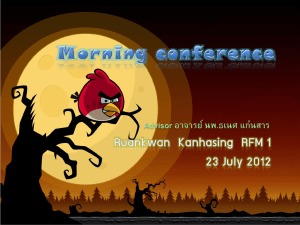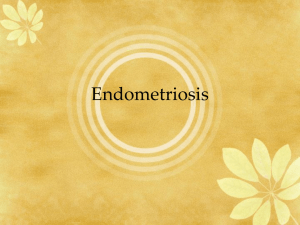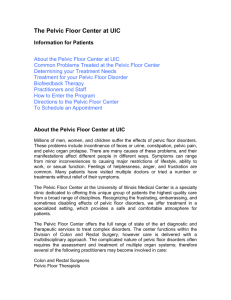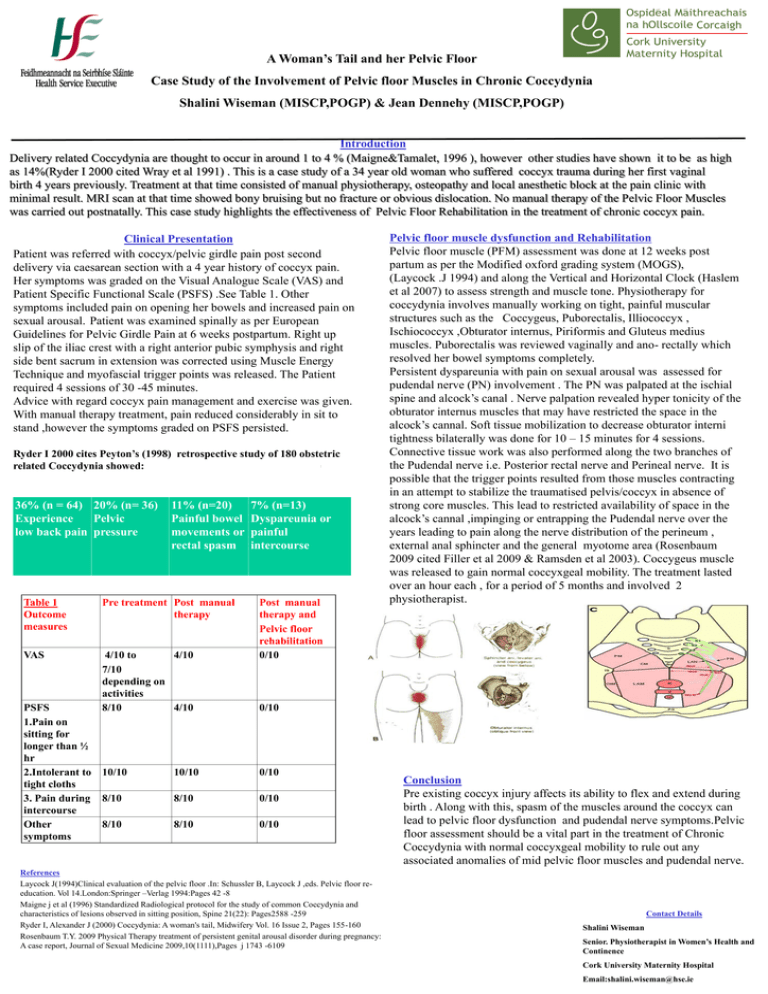
A Woman’s Tail and her Pelvic Floor
Case Study of the Involvement of Pelvic floor Muscles in Chronic Coccydynia
Shalini Wiseman (MISCP,POGP) & Jean Dennehy (MISCP,POGP)
Introduction
Delivery related Coccydynia are thought to occur in around 1 to 4 % (Maigne&Tamalet, 1996 ), however other studies have shown it to be as high
as 14%(Ryder I 2000 cited Wray et al 1991) . This is a case study of a 34 year old woman who suffered coccyx trauma during her first vaginal
birth 4 years previously. Treatment at that time consisted of manual physiotherapy, osteopathy and local anesthetic block at the pain clinic with
minimal result. MRI scan at that time showed bony bruising but no fracture or obvious dislocation. No manual therapy of the Pelvic Floor Muscles
was carried out postnatally. This case study highlights the effectiveness of Pelvic Floor Rehabilitation in the treatment of chronic coccyx pain.
Clinical Presentation
Patient was referred with coccyx/pelvic girdle pain post second
delivery via caesarean section with a 4 year history of coccyx pain.
Her symptoms was graded on the Visual Analogue Scale (VAS) and
Patient Specific Functional Scale (PSFS) .See Table 1. Other
symptoms included pain on opening her bowels and increased pain on
sexual arousal. Patient was examined spinally as per European
Guidelines for Pelvic Girdle Pain at 6 weeks postpartum. Right up
slip of the iliac crest with a right anterior pubic symphysis and right
side bent sacrum in extension was corrected using Muscle Energy
Technique and myofascial trigger points was released. The Patient
required 4 sessions of 30 -45 minutes.
Advice with regard coccyx pain management and exercise was given.
With manual therapy treatment, pain reduced considerably in sit to
stand ,however the symptoms graded on PSFS persisted.
Ryder I 2000 cites Peyton’s (1998) retrospective study of 180 obstetric
related Coccydynia showed:
:
36% (n = 64) 20% (n= 36)
Experience
Pelvic
low back pain pressure
11% (n=20)
Painful bowel
movements or
rectal spasm
Table 1
Outcome
measures
Pre treatment Post manual
therapy
VAS
4/10 to
4/10
7/10
depending on
activities
8/10
4/10
PSFS
1.Pain on
sitting for
longer than ½
hr
2.Intolerant to 10/10
tight cloths
3. Pain during 8/10
intercourse
Other
8/10
symptoms
7% (n=13)
Dyspareunia or
painful
intercourse
Post manual
therapy and
Pelvic floor
rehabilitation
0/10
Pelvic floor muscle dysfunction and Rehabilitation
Pelvic floor muscle (PFM) assessment was done at 12 weeks post
partum as per the Modified oxford grading system (MOGS),
(Laycock .J 1994) and along the Vertical and Horizontal Clock (Haslem
et al 2007) to assess strength and muscle tone. Physiotherapy for
coccydynia involves manually working on tight, painful muscular
structures such as the Coccygeus, Puborectalis, Illiococcyx ,
Ischiococcyx ,Obturator internus, Piriformis and Gluteus medius
muscles. Puborectalis was reviewed vaginally and ano- rectally which
resolved her bowel symptoms completely.
Persistent dyspareunia with pain on sexual arousal was assessed for
pudendal nerve (PN) involvement . The PN was palpated at the ischial
spine and alcock’s canal . Nerve palpation revealed hyper tonicity of the
obturator internus muscles that may have restricted the space in the
alcock’s cannal. Soft tissue mobilization to decrease obturator interni
tightness bilaterally was done for 10 – 15 minutes for 4 sessions.
Connective tissue work was also performed along the two branches of
the Pudendal nerve i.e. Posterior rectal nerve and Perineal nerve. It is
possible that the trigger points resulted from those muscles contracting
in an attempt to stabilize the traumatised pelvis/coccyx in absence of
strong core muscles. This lead to restricted availability of space in the
alcock’s cannal ,impinging or entrapping the Pudendal nerve over the
years leading to pain along the nerve distribution of the perineum ,
external anal sphincter and the general myotome area (Rosenbaum
2009 cited Filler et al 2009 & Ramsden et al 2003). Coccygeus muscle
was released to gain normal coccyxgeal mobility. The treatment lasted
over an hour each , for a period of 5 months and involved 2
physiotherapist.
0/10
10/10
0/10
8/10
0/10
8/10
0/10
References
Laycock J(1994)Clinical evaluation of the pelvic floor .In: Schussler B, Laycock J ,eds. Pelvic floor reeducation. Vol 14.London:Springer –Verlag 1994:Pages 42 -8
Maigne j et al (1996) Standardized Radiological protocol for the study of common Coccydynia and
characteristics of lesions observed in sitting position, Spine 21(22): Pages2588 -259
Ryder I, Alexander J (2000) Coccydynia: A woman's tail, Midwifery Vol. 16 Issue 2, Pages 155-160
Rosenbaum T.Y. 2009 Physical Therapy treatment of persistent genital arousal disorder during pregnancy:
A case report, Journal of Sexual Medicine 2009,10(1111),Pages j 1743 -6109
Conclusion
Pre existing coccyx injury affects its ability to flex and extend during
birth . Along with this, spasm of the muscles around the coccyx can
lead to pelvic floor dysfunction and pudendal nerve symptoms.Pelvic
floor assessment should be a vital part in the treatment of Chronic
Coccydynia with normal coccyxgeal mobility to rule out any
associated anomalies of mid pelvic floor muscles and pudendal nerve.
Contact Details
Shalini Wiseman
Senior. Physiotherapist in Women’s Health and
Continence
Cork University Maternity Hospital
Email:shalini.wiseman@hse.ie

